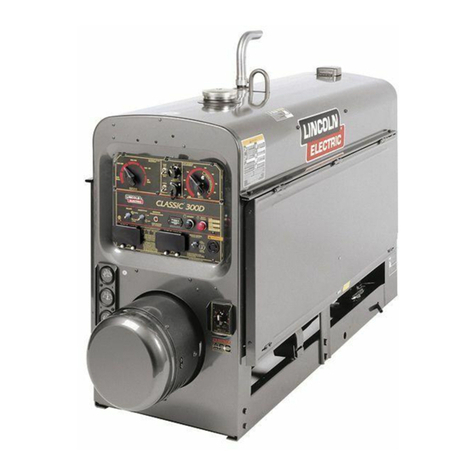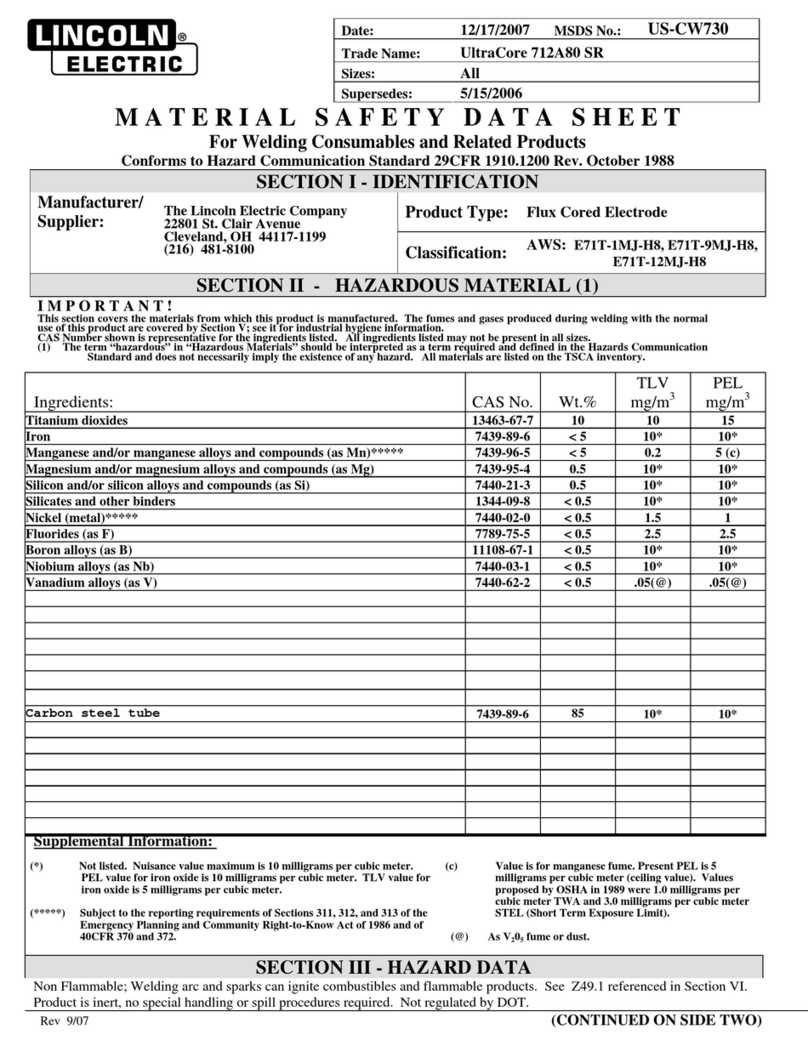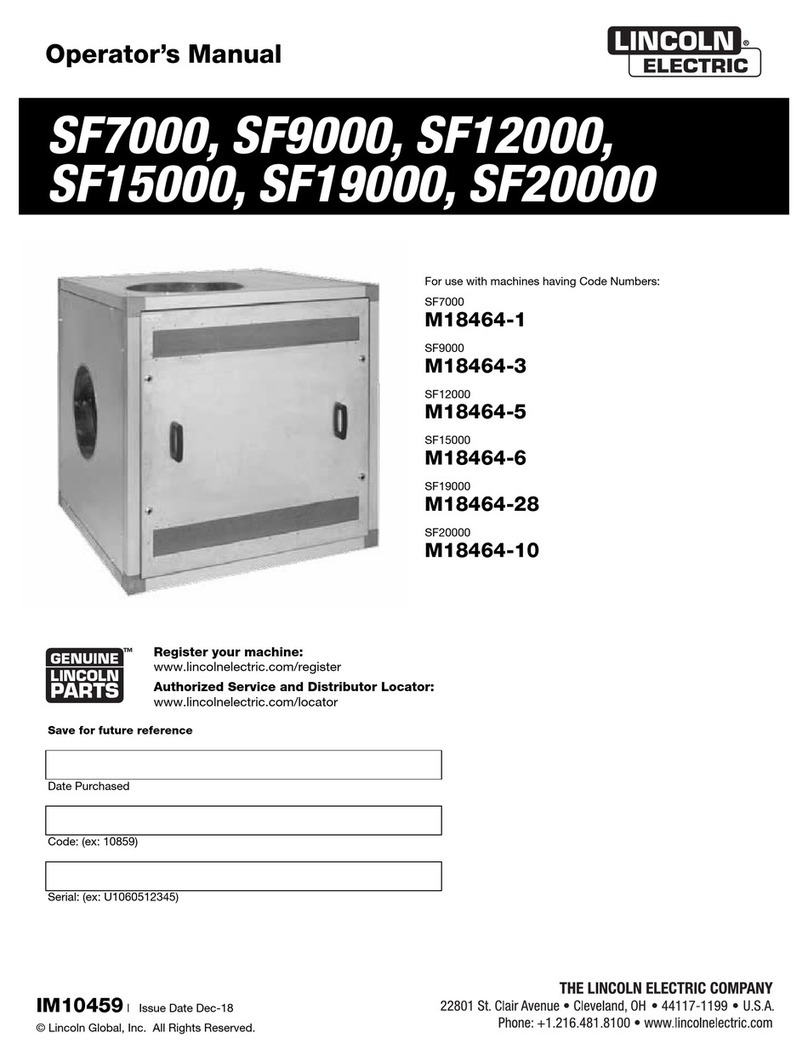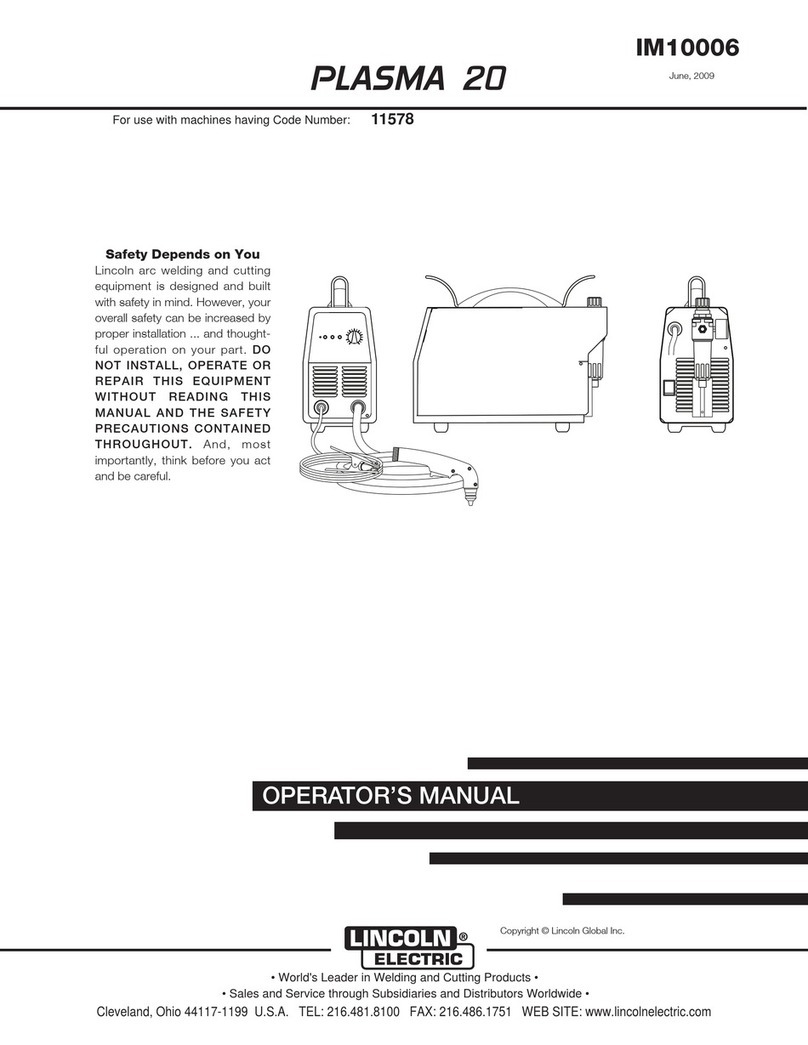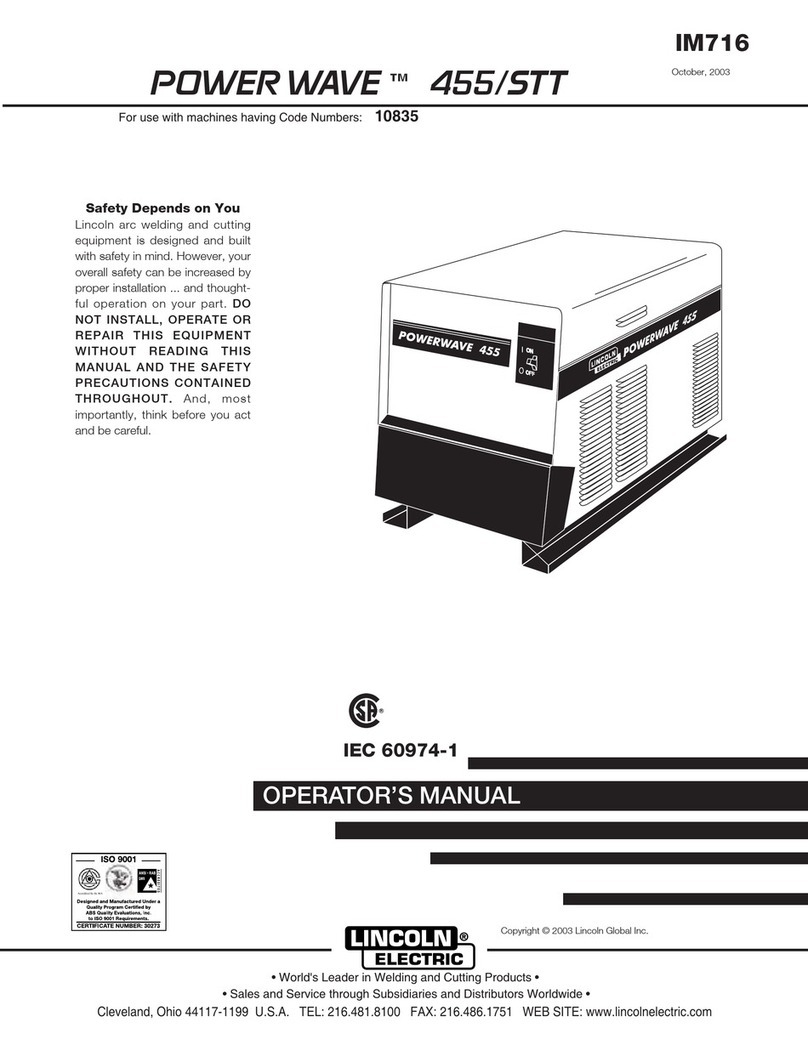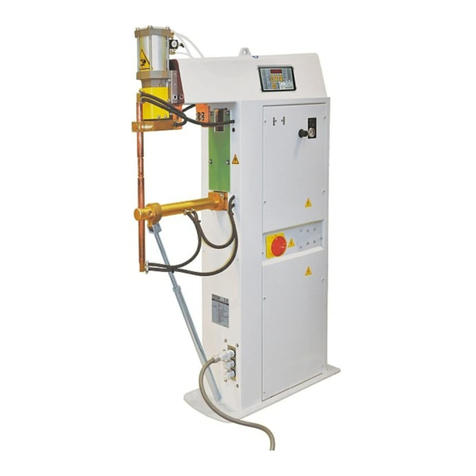ELECTR C SHOCK
can kill.
3.a. The electrode and work (or ground) circuits
are electrically “hot” when the welder is on.
Do not touch these “hot” parts with your bare
skin or wet clothing. Wear dry, hole-free
gloves to insulate hands.
3.b. Insulate yourself from work and ground using dry
insulation. Make certain the insulation is large enough to
cover your full area of physical contact with work and
ground.
n addition to the normal safety precautions, if welding
must be performed under electrically hazardous
conditions (in damp locations or while wearing wet
clothing; on metal structures such as floors, gratings
or scaffolds; when in cramped positions such as
sitting, kneeling or lying, if there is a high risk of
unavoidable or accidental contact with the workpiece
or ground) use the following equipment:
• Semiautomatic DC Constant Voltage (Wire) Welder.
• DC Manual (Stick) Welder.
• AC Welder with Reduced Voltage Control.
3.c. In semi-automatic or automatic wire welding, the
electrode, electrode reel, welding head, nozzle or semi-
automatic welding gun are also electrically “hot”.
3.d. Always be sure the work cable makes a good electrical
connection with the metal being welded. The connection
should be as close as possible to the area being welded.
3.e. Ground the work or metal to be welded to a good electrical
(earth) ground.
3.f. Maintain the electrode holder, work clamp, welding cable
and welding machine in good, safe operating condition.
Replace damaged insulation.
3.g. Never dip the electrode holder in water for cooling.
3.h. Never simultaneously touch electrically “hot” parts of
electrode holders connected to two welders because
voltage between the two can be the total of the open circuit
voltage of both welders.
3.i. When working above floor level, use a safety belt to
protect yourself from a fall should you get a shock.
3.j. Also see items 6c and 8.
FUMES AND GASES
can be dangerous
5. . Welding m y produce fumes nd g ses
h z rdous to he lth. Avoid bre thing these
fumes nd g ses. When welding, keep
your he d out of the fume. Use enough
ventil tion nd/or exh ust t the rc to keep
fumes nd g ses w y from the bre thing zone. When
weld ng w th electrodes wh ch requ re spec al
vent lat on such as sta nless or hard fac ng (see
nstruct ons on conta ner or MSDS) or on lead or
cadm um plated steel and other metals or coat ngs
wh ch produce h ghly tox c fumes, keep exposure as
low as poss ble and w th n appl cable OSHA PEL and
ACGIH TLV l m ts us ng local exhaust or mechan cal
vent lat on. In conf ned spaces or n some
c rcumstances, outdoors, a resp rator may be requ red.
Add t onal precaut ons are also requ red when weld ng
on galvan zed steel.
5. b. The oper tion of welding fume control equipment is
ffected by v rious f ctors including proper use nd
positioning of the equipment, m inten nce of the
equipment nd the specific welding procedure nd
pplic tion involved. Worker exposure level should be
checked upon inst ll tion nd periodic lly there fter to be
cert in it is within pplic ble OSHA PEL nd ACGIH TLV
limits.
5.c.
Do not weld in loc tions ne r chlorin ted hydroc rbon
v pors
coming from degre sing, cle ning or spr ying oper tions.
The he t nd r ys of the rc c n re ct with solvent v pors
to
form phosgene, highly toxic g s, nd other irrit ting
products.
5.d. Shielding g ses used for rc welding c n displ ce ir nd
c use injury or de th. Alw ys use enough ventil tion,
especi lly in confined re s, to insure bre thing ir is s fe.
5.e. Re d nd underst nd the m nuf cturer’s instructions for
this equipment nd the consum bles to be used, including
the m teri l s fety d t sheet (MSDS) nd follow your
employer’s s fety pr ctices. MSDS forms re v il ble from
your welding distributor or from the m nuf cturer.
5.f. Also see item 1.b.
ARC RAYS can burn.
4 a Use a shield with the proper filter and cover
plates to protect your eyes from sparks and
the rays of the arc when welding or
observing open arc welding. Headshield
and filter lens should conform to ANSI
Z87.1 standards.
4.b.Use suitable clothing made from durable flame resistant
material to protect your skin and that of your helpers from the
arc rays.
4.c.Protect other nearby personnel with suitable non flammable
screening and/or warn them not to watch the arc or expose
themselves to the arc rays or to hot spatter or metal.
ii SAFETY ii
J n ‘09


